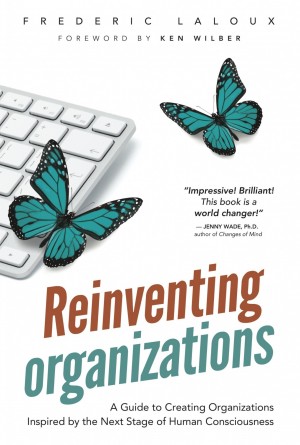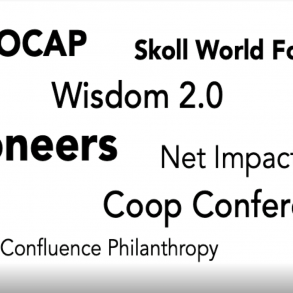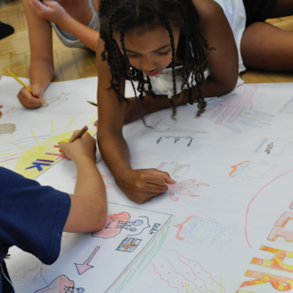Originally posted by Nick Wilding here http://workforcescotland.com/2015/06/23/beginnings-of-a-book-group/
Last Thursday, nine of us – a mix of folk from across the third, private and public service sector – met to talk about Frederic Laloux’s book Reinventing Organisations (see https://www.reinventingorganizations.com/).
This was the next in a few ‘ideas’ events we’ve had as part of the Skilled Workers, Skilled Citizens initiative of Scottish Leaders’ Forum. I hosted the session in Victoria Quay (Edinburgh) – hoping that some of my new colleagues from Scottish Government might be able to join (and many thanks to those who found the time…).
As this was the first time we’d met as a book group, we started with a check-in about how we felt about reading books in general.
It turned out that
- Some of us haven’t ever really read much – but were up for the challenge
- Some of us are already part of other book groups and love debating ideas
- Some of us feel swamped by other things and rarely get the chance to read a book properly – so it felt like a ‘luxury’; and
- Some of us are writers and are interested in why some books get noticed…
I then explained I’d suggested this book as a starter because:
- Three people told me to read it last year. I also saw that lots of different networks are talking about it;
- When I got round to reading it over Easter I couldn’t put it down. The ideas/stories/examples in it are inspiring/provocative, the tone and language is easy to engage with… it’s a good read; and
- It gave me some ideas about how to go about bringing together stories and ideas from SWSC pioneer sites into a toolkit/resource/publication.
Before we got together, most of us had emailed a quote from the book that jumped out at us (see these at the bottom of this blog). This turned out to be a great way to discover what others are seeing in the book and why and helped get the conversation started. We agreed we’d try the same approach next time too.
One person couldn’t be there, so I read the quote she’d sent in:
“Crashing through the woods is how we have learned to be together in organisations. All it takes to scare the soul away is to make a sarcastic comment or to roll the eyes in a meeting. If we are to invite all of who we are to show up, including the shy inner voice of the soul, we need to create safe and caring spaces at work. We must learn to discern and be mindful of the subtle ways our words and actions undermine safety and trust in a community of colleagues.”
This was from Chapter 2.4 – ‘Striving for Wholeness (General Practices)’. I’d suggested we all read that chapter because so much of what it contains seems in tune with what pioneer sites from Skilled Workers, Skilled Citizens are already doing – practical ways to try to put relationships and trust are before targets and tick-boxes. I also really liked the focus in this chapter on practices – that is, the practical things that –according to Laloux’ in any case – seem to be having some remarkable results in making what he calls ‘teal’ organizations more effective than other types (‘orange’ and ‘green’) that have gone before – there’s a neat animation giving an overview of this thinking here:
Quotes that participants in this group pulled out of Reinventing Organisations before the session:
- “Einstein once famously said that problems couldn’t be solved with the same level of consciousness that created them in the first place. Perhaps we need to access a new stage of consciousness, a new world view, to reinvent organisations.
- What do organisations moulded around the next stage of consciousness look and feel like? Is it already possible to describe their structures, practices, processes and cultures (in other words, to conceptualise the organisational model) in useful detail, to help other people set up similar organisations”
- “the organization (is) no longer (viewed) as property, not even shared property in service of its different stakeholders. The organization is viewed as an energy field, emerging potential, a form of life that transcends its stakeholders, pursuing its own unique evolutionary purpose. In that paradigm, we don’t “run” the organization, not even if we are the founder or legal owner. Instead, we are stewards of the organization; we are the vehicle that listens in to the organization’s deep creative potential to help it do its work in the world.”
- “as human beings, we are not problems waiting to be solved, but potential waiting to unfold.”
- “Crashing through the woods is how we have learned to be together in organisations. All it takes to scare the soul away is to make a sarcastic comment or to roll the eyes in a meeting. If we are to invite all of who we are to show up, including the shy inner voice of the soul, we need to create safe and caring spaces at work. We must learn to discern and be mindful of the subtle ways our words and actions undermine safety and trust in a community of colleagues.
- “Unencumbered by deep soulful questions, our ego reaches the peak of its dominance at this stage [achievement orange] as we invest it with all our hopes of achievement and success”
- “RHD, like AES and FAVI, is explicitly founded on a number of basic assumptions about people and work— in the case of RHD, that 1) all people are of equal human worth , 2) people are essentially good unless proven otherwise , and 3) there is no single way to manage corporate issues well . Each of RHD’s programs is run by a self- managing team, with an average of 20 and at most 40 to 50 people. Units, as these teams are called within RHD, are encouraged to develop their own sense of purpose, pride, and identity.”
- ‘Wisdom traditions affirm that when we act from deep integrity, the universe conspires to support us’





